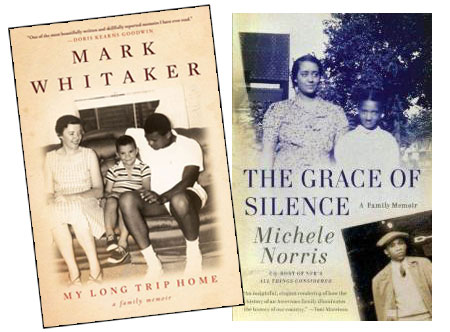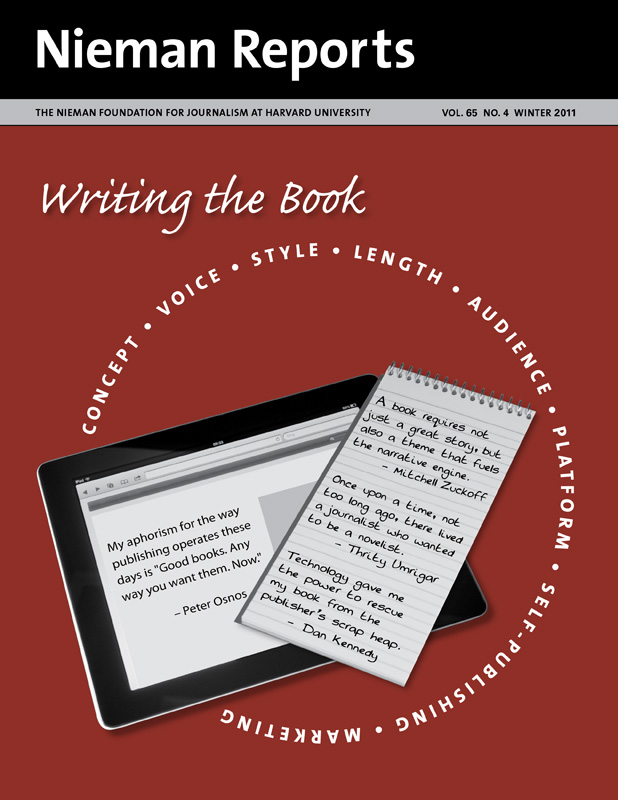“Professor Weldon, I had no idea you had a past.”
A student I had taught in a freshman journalism skills class at the Medill School of Journalism at Northwestern University stopped me on the first floor of Fisk Hall on my way to give a lecture. The look on her face was parked between astonishment and curiosity. It was a few days after I appeared as a guest on “The Oprah Winfrey Show” in October 2002, speaking about my first book, “I Closed My Eyes: Revelations of a Battered Woman.”
“Yes, I do,” I answered. “When you get to be my age, everyone has a past.”
RELATED ARTICLE
“Tips for Journalists Writing Memoirs”
– Michele WeldonOf all the millions of words I have written as a journalist for newspapers, magazines, websites and radio in the past three decades, the memoir about my marriage to a cyclically violent attorney and the difficulty of raising three sons in the aftermath of domestic violence is what I am most proud of personally and professionally. That is not to imply it was easy.
It felt risky as a journalist to spell out the secrets of my own life, to stand in front of my peers, editors, administrators, students and readers without pretense or shame, to invite the collision of the professional and personal. But I felt it important to honestly dispel the myth that such an aberration does not happen to women like me who are successful, confident, intelligent and have no history of abuse.
The point of the memoir, as it is for most memoirists, is to artfully illuminate a corner of the world to empower and educate others. My motivation to write the memoir in stolen moments while teaching and working as a freelance contributing columnist to the Chicago Tribune was because I felt foolish and hypocritical telling other people’s stories as a journalist every week when I was afraid—and embarrassed—to tell my own.
The drive to authentically articulate the truth was more powerful than I could have imagined. It is a force many journalists experience.
The Inside Scoop
Journalists penning compelling memoirs is not new; but what is new is the growth of the genre and the evolution into several subsets of memoir. This is a recent splintering beyond what I call the “career rearview mirror” tome of the past that can involve namedropping and exotic locales peppered with peeks behind the scenes and insights into the profession.
Still, the career memoir is a frequent entrée in the buffet. Soledad O’Brien’s “The Next Big Story: My Journey Through the Land of Possibilities,” published last year, charts her course from childhood to the CNN anchor desk. Ron Nessen’s recent release, “Making the News, Taking the News: From NBC to the Ford White House,” is also a career overview. Each is a collection of anecdotes and eyewitness revelations, career highs and lows, more of a narrative version of their Wikipedia entries than a salacious glimpse into a fascinating, fast life many of us will never know or the train wreck celebrity memoirs oozing out from the coasts.

“Career Rearview Mirror” memoirs
This Google Earth approach to journalist memoir is only one take on the genre. In it, the journalist stars as main character in a historical narrative, chronicling a timeline that can offer revelations about the process of reporting, if not always about the inner mechanics of a contemplative life.
Another approach, or the “how I came to be” memoir by journalists, has traction because it can serve as a mentoring guide as well as bridge the personal to the universal with well-written discoveries about self-purpose before the onset of journalistic fame. USA Today columnist and ABC and NPR commentator Christine Brennan’s “Best Seat in the House: A Father, a Daughter, a Journey Through Sports,” from 2006, is a sentimental and intelligent ode to her family, particularly her father, and how his encouragement led her to a career in sports journalism. Quite recent is former Newsweek editor Mark Whitaker’s “My Long Trip Home: A Family Memoir,” which tells the complicated story of his parents’ interracial marriage and its effects on his life. Earlier this year Michele Norris, cohost of NPR’s “All Things Considered,” released “The Grace of Silence: A Family Memoir” about her upbringing.

“How I Came to Be” memoirs
With compelling writing and reportorial skill, these memoirs highlight personal growth and transformation, the unseen sides of public personas who tell the truth about current events for a living.
Brennan, an author of six other books, worked for 15 years as a reporter for The Miami Herald and The Washington Post before she became a national columnist in 1997. “I was more prepared to write a memoir as a columnist than I ever would have been as a reporter,” she said, adding, “It’s quaint now to think about the days when you didn’t want to be part of the story. With all the social media—Twitter, Facebook and everything being about me, me, me—it’s now such a personality-driven journalistic world.”
Objective Journalism vs. Subjective Memoir
It is that traditional imagined wall between the objective and the subjective in journalism that appears now to be eroding, if not crumbling, thanks in part to blogs and social media. Perhaps this is smoothing the path for more journalists to attempt memoir. With the advent of more narrative approaches in everyday news reporting, the genre of memoir is not seen as so daring a leap for a journalist to take. Stylistically it is not so difficult to imagine expanding the narrative muscle into a personal book.
For many journalists, their creative nonfiction career has regularly delivered large doses of personal observations and insertions of self. And for those writers who recount phases of their lives in what I call “delicious slices,” one memoir is not necessarily enough. Joan Didion recently wrote “Blue Nights,” about the death of her daughter, Quintana. The book cover even mimics the tone and look of her 2005 book, “The Year of Magical Thinking,” her memoir about the period following her husband’s death. With Didion, writing is the leading character, raw, vulnerable and simultaneously polished and deliberate, shining in its timelessness and originality.

“In Sickness and in Health” memoirs
Some iconic journalists inspire curiosity about their lives because of their suffering or triumph over illness, catastrophe and misfortune. Roger Ebert’s new “Life Itself: A Memoir” promises to deliver the characteristic witticisms of a movie reviewer cult hero, who literally lost his audible voice, only to sharpen his written one. In a category of memoir I call “in sickness and in health,” Hoda Kotb contributed her 2010 book, “Hoda: How I Survived War Zones, Bad Hair, Cancer, and Kathie Lee,” an irreverent work from an irreverent broadcast journalist.

“Far Away” memoirs
The “far away” memoir is one that travel writers and journalists living abroad or on voluntary or imposed sabbatical render, including the classic from Martha Gellhorn, “Travels With Myself and Another: A Memoir,” originally published in 1978. Magazine journalist Alexandra Fuller, who grew up in Africa, recently released a second memoir, “Cocktail Hour Under the Tree of Forgetfulness,” a prequel to her 2001 memoir, “Don’t Let’s Go to the Dogs Tonight: An African Childhood.” These memoirs offer setting as character and the author on a journey of discovery driven by place. Print and broadcast journalist Katherine Lanpher took the backdrop of a move to New York as a driving force in her 2006 memoir, “Leap Days: Chronicles of a Midlife Move,” proving that for a Minnesota-based journalist even Manhattan can be a far journey.
Chicago journalist Maureen Jenkins who has spent two decades writing for newspapers including The Oregonian, The Charlotte (N.C.) Observer, The Arizona Republic, Chicago Sun-Times, and Chicago Tribune, is eager to begin work on such a memoir when she moves later this year to Samois-sur-Seine, a small village 40 miles south of Paris, for one year. To begin to feel comfortable with the more personal voice required for memoir, Jenkins began blogging. Still, she understands the price of naming her personal voice.
“Everything you put your name on you have to be comfortable standing behind whether it is a tweet, a Facebook entry, or a memoir,” Jenkins said. “At some point you will want to write objective journalism again and it may be difficult for you to be seen as a credible journalist.”

“Out of Left Field” memoirs
In an era of sophisticated blogs that can support early musings and drafts that can later be formed into a memoir, journalists can heed the caveat that no matter where the content appears, it must be truthful and able to withstand scrutiny. As some memoirists move to self-publishing and go straight to Kindle or Nook, bypassing the gatekeeping editor of publishing houses, the safety net of copy editors and fact checkers is removed (and at some publishing houses, line editing doesn’t happen anymore anyway).
Any journalist hoping to write a memoir needs to pause before posting personal content since what is written now—and appearing anywhere—can definitely have an impact on a career.
Some new memoirs by journalists have little to do with their professional lives. From the first female executive editor of The New York Times, Jill Abramson, comes her 2011 book, “The Puppy Diaries: Raising a Dog Named Scout,” about her golden retriever’s first year. This “out of left field” memoir may say more in what it does not say, while revealing an arena of a famous journalist’s life completely unrelated to the work. Ellen Sweets, a journalist and longtime friend of the irascible and irreverent Molly Ivins, this year released “Stirring It Up With Molly Ivins: A Memoir With Recipes,” a cookbook/memoir serving up friendship as well as recipes.

“Bang Bang” memoirs
The category of what some others call “bang bang” memoirs is becoming more and more crowded as correspondents and freelance journalists filing from conflict zones around the world return home. “The Woman Who Fell From the Sky: An American Journalist in Yemen,” a 2010 book by Jennifer Steil, included stories of a love affair as well as her year running a Yemeni English-language newspaper. Stories of culture clash, courage and daring also populate the 2010 book by Fred Minnick, “Camera Boy: An Army Journalist’s War in Iraq.”
No matter what category a journalist’s memoir falls into, accuracy must be maintained, along with faithfulness to the reporting and depiction of a life in toto or a slice of life that is truthful. The urge to write a personal story cannot eclipse the need to report fully. As I remind my students at Medill and also in my Writing to Save Your Life memoir workshops around the country, memory cannot be the only thing you rely on to produce memoir. The story must move beyond a verbal regurgitation of hastily recalled anecdotes. You need to report live from your life, researching with interviews, data and documents that support your recollections.
Without the dutiful pursuit of facts and a clear, deliberate attempt to decipher some meaning from the acts, events and occurrences with introspection and context, what results is simply a collection of dusty anecdotes from the past. And that is a work that is no more interesting or artful than a grocery list found in a pocket of an old raincoat.
Michele Weldon is an assistant professor of journalism at Northwestern University’s Medill School of Journalism, the author of three books, and a journalist for more than 30 years. She is a seminar leader and mentor/editor for The OpEd Project and recently completed a second memoir, “Escape Points,” about raising three sons, their high school wrestling careers, and her recovery from cancer.



